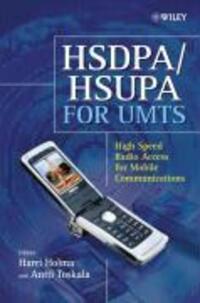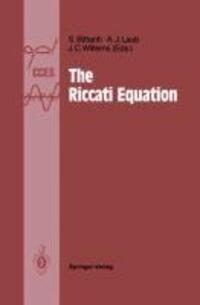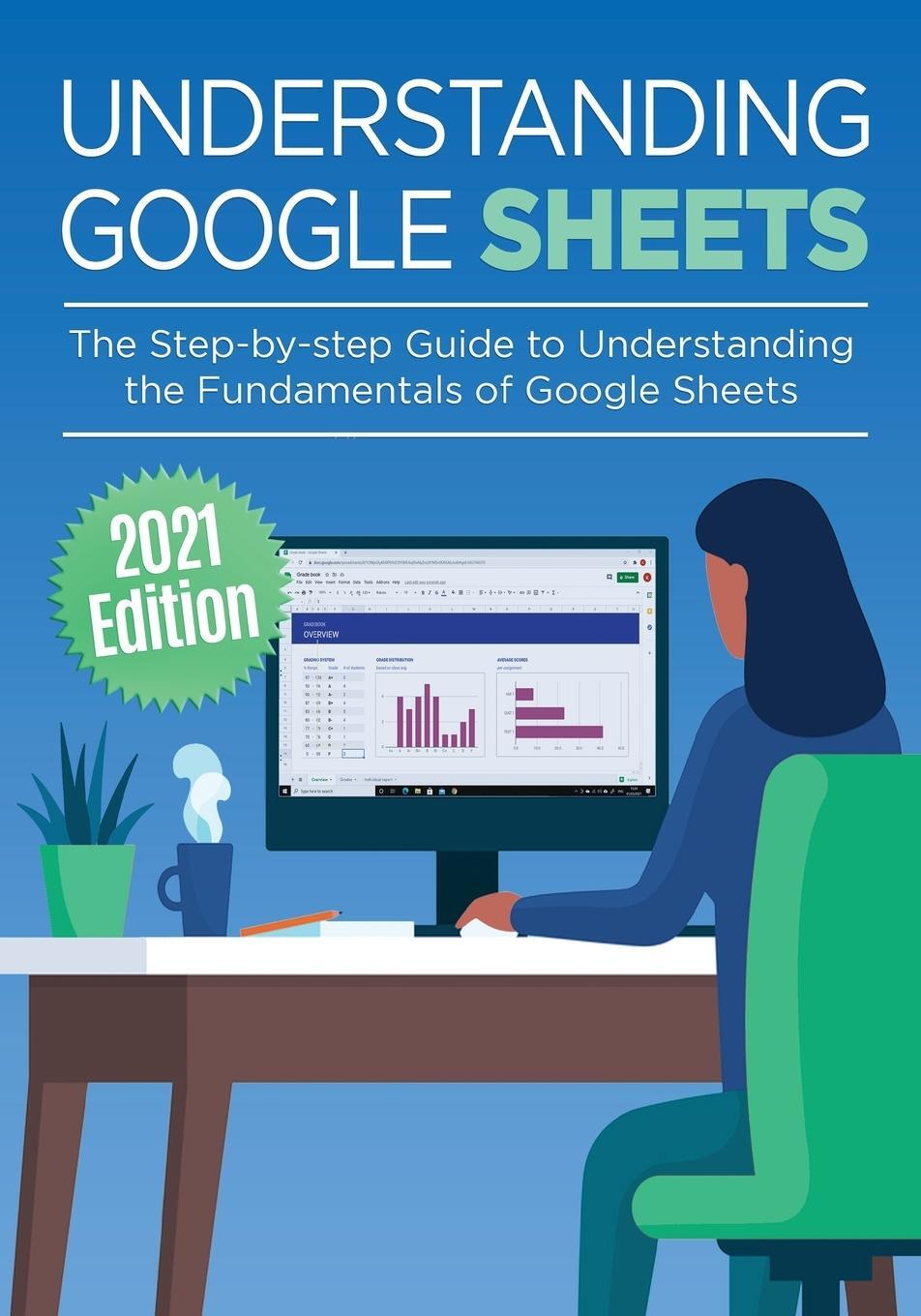Dekorationsartikel gehören nicht zum Leistungsumfang.
Sprache:
Englisch
140,50 €*
Versandkostenfrei per Post / DHL
Aktuell nicht verfügbar
Kategorien:
Beschreibung
Von den Herausgebern des Bestsellers WCDMA for UMTS stammt diese umfassende und aktuelle Referenz zu High Speed Packet Access (HSPA)-Technologien für WCDMA. Die Autoren behandeln sowohl HSDPA als auch HSUPA einschließlich einer Beschreibung und Erklärung der 3GPP-Standards. Das Buch diskutiert den Einfluss von HSDPA und HSUPA auf die Netzwerkdimensionierung, behandelt Anwendungen und die End-to-End-Performance im Detail und enthält auch einen Abschnitt über Anforderungen an die Funkschnittstelle und das Endgerätedesign.
Von den Herausgebern des Bestsellers WCDMA for UMTS stammt diese umfassende und aktuelle Referenz zu High Speed Packet Access (HSPA)-Technologien für WCDMA. Die Autoren behandeln sowohl HSDPA als auch HSUPA einschließlich einer Beschreibung und Erklärung der 3GPP-Standards. Das Buch diskutiert den Einfluss von HSDPA und HSUPA auf die Netzwerkdimensionierung, behandelt Anwendungen und die End-to-End-Performance im Detail und enthält auch einen Abschnitt über Anforderungen an die Funkschnittstelle und das Endgerätedesign.
Über den Autor
Dr. Harri Holma is Principal Engineer at Nokia Networks, with special focus on UMTS/HSDPA performance. He has been with Nokia since 1994. Dr. Holma co-edited the book WCDMA for UMTS' and completed his PhD on UMTS performance at Helsinki University of Technology.
Antti Toskala also joined Nokia in 1994, and is currently Senior Standardisation Manager with System Technologies, Nokia Networks, and contributes to product development as HSDPA Chief Architect for Nokia Networks. He has a large number of publications in the field, and is co-editor/author of WCDMA for UMTS.
Antti Toskala also joined Nokia in 1994, and is currently Senior Standardisation Manager with System Technologies, Nokia Networks, and contributes to product development as HSDPA Chief Architect for Nokia Networks. He has a large number of publications in the field, and is co-editor/author of WCDMA for UMTS.
Inhaltsverzeichnis
Preface.
Acknowledgements.
Abbreviations.
1. Introduction (Harri Holma and Antti Toskala).
1.1 WCDMA technology and deployment status.
1.2 HSPA standardization and deployment schedule.
1.3 Radio capability evolution with HSPA.
2. HSPA standardization and background (Antti Toskala and Karri Ranta-Aho)
2.1 3GPP.
2.2 References.
3. HSPA architecture and protocols (Antti Toskala and Juho Pirskanen).
3.1 Radio resource management architecture.
3.2 References.
4. HSDPA principles (Juho Pirskanen and Antti Toskala).
4.1 HSDPA vs Release 99 DCH.
4.2 Key technologies with HSDPA.
4.3 High-speed dedicated physical control channel.
4.4 BTS measurements for HSDPA operation.
4.5 Terminal capabilities.
4.6 HSDPA MAC layer operation.
4.7 References.
5. HSUPA principles (Karri Ranta-Aho and Antti Toskala).
5.1 HSUPA vs Release 99 DCH.
5.2 Key technologies with HSUPA.
5.3 E-DCH transport channel and physical channels.
5.4 Physical layer procedures.
5.5 MAC layer.
5.6 Iub parameters.
5.7 Mobility.
5.8 UE capabilities and data rates.
5.9 References and list of related 3GPP specifications.
6. Radio resource management (Harri Holma, Troels Kolding, Klaus Pedersen, and Jeroen Wigard).
6.1 HSDPA radio resource management.
6.2 HSUPA radio resource management.
6.3 References.
7. HSDPA bit rates, capacity and coverage (Frank Frederiksen, Harri Holma, Troels Kolding, and Klaus Pedersen).
7.1 General performance factors.
7.2 Single-user performance.
7.3 Multiuser system performance.
7.4 Iub transmission efficiency.
7.5 Capacity and cost of data delivery.
7.6 Round trip time.
7.7 HSDPA measurements.
7.8 HSDPA performance evolution.
7.9 Conclusions.
7.10 Bibliography.
8. HSUPA bit rates, capacity and coverage (Jussi Jaatinen, Harri Holma, Claudio Rosa, and Jeroen Wigard).
8.1 General performance factors.
8.2 Single-user performance.
8.3 Cell capacity.
8.4 HSUPA performance enhancements.
8.5 Conclusions.
8.6 Bibliography.
9. Application and end-to-end performance (Chris Johnson, Sandro Grech, Harri Holma, and Martin Kristensson)
9.1 Packet application introduction.
9.2 Always-on connectivity.
9.3 Application performance over HSPA.
9.4 Application performance vs network load.
9.5 References.
10. Voice-over-IP (Harri Holma, Esa Malkamäki, and Klaus Pedersen).
10.1 VoIP motivation.
10.2 IP header compression.
10.3 VoIP over HSPA.
10.4 References.
11. RF requirements of an HSPA terminal (Harri Holma, Jussi Numminen, Markus Pettersson, and Antti Toskala).
11.1 Transmitter requirements.
11.2 Receiver requirements.
11.3 Frequency bands and multiband terminals.
11.4 References.
Index.
Acknowledgements.
Abbreviations.
1. Introduction (Harri Holma and Antti Toskala).
1.1 WCDMA technology and deployment status.
1.2 HSPA standardization and deployment schedule.
1.3 Radio capability evolution with HSPA.
2. HSPA standardization and background (Antti Toskala and Karri Ranta-Aho)
2.1 3GPP.
2.2 References.
3. HSPA architecture and protocols (Antti Toskala and Juho Pirskanen).
3.1 Radio resource management architecture.
3.2 References.
4. HSDPA principles (Juho Pirskanen and Antti Toskala).
4.1 HSDPA vs Release 99 DCH.
4.2 Key technologies with HSDPA.
4.3 High-speed dedicated physical control channel.
4.4 BTS measurements for HSDPA operation.
4.5 Terminal capabilities.
4.6 HSDPA MAC layer operation.
4.7 References.
5. HSUPA principles (Karri Ranta-Aho and Antti Toskala).
5.1 HSUPA vs Release 99 DCH.
5.2 Key technologies with HSUPA.
5.3 E-DCH transport channel and physical channels.
5.4 Physical layer procedures.
5.5 MAC layer.
5.6 Iub parameters.
5.7 Mobility.
5.8 UE capabilities and data rates.
5.9 References and list of related 3GPP specifications.
6. Radio resource management (Harri Holma, Troels Kolding, Klaus Pedersen, and Jeroen Wigard).
6.1 HSDPA radio resource management.
6.2 HSUPA radio resource management.
6.3 References.
7. HSDPA bit rates, capacity and coverage (Frank Frederiksen, Harri Holma, Troels Kolding, and Klaus Pedersen).
7.1 General performance factors.
7.2 Single-user performance.
7.3 Multiuser system performance.
7.4 Iub transmission efficiency.
7.5 Capacity and cost of data delivery.
7.6 Round trip time.
7.7 HSDPA measurements.
7.8 HSDPA performance evolution.
7.9 Conclusions.
7.10 Bibliography.
8. HSUPA bit rates, capacity and coverage (Jussi Jaatinen, Harri Holma, Claudio Rosa, and Jeroen Wigard).
8.1 General performance factors.
8.2 Single-user performance.
8.3 Cell capacity.
8.4 HSUPA performance enhancements.
8.5 Conclusions.
8.6 Bibliography.
9. Application and end-to-end performance (Chris Johnson, Sandro Grech, Harri Holma, and Martin Kristensson)
9.1 Packet application introduction.
9.2 Always-on connectivity.
9.3 Application performance over HSPA.
9.4 Application performance vs network load.
9.5 References.
10. Voice-over-IP (Harri Holma, Esa Malkamäki, and Klaus Pedersen).
10.1 VoIP motivation.
10.2 IP header compression.
10.3 VoIP over HSPA.
10.4 References.
11. RF requirements of an HSPA terminal (Harri Holma, Jussi Numminen, Markus Pettersson, and Antti Toskala).
11.1 Transmitter requirements.
11.2 Receiver requirements.
11.3 Frequency bands and multiband terminals.
11.4 References.
Index.
Details
| Erscheinungsjahr: | 2006 |
|---|---|
| Fachbereich: | Nachrichtentechnik |
| Genre: | Technik |
| Rubrik: | Naturwissenschaften & Technik |
| Medium: | Buch |
| Seiten: | 268 |
| Inhalt: | 268 S. |
| ISBN-13: | 9780470018842 |
| ISBN-10: | 0470018844 |
| Sprache: | Englisch |
| Herstellernummer: | 14501884000 |
| Einband: | Gebunden |
| Redaktion: |
Holma, Harri
Toskala, Antti |
| Herausgeber: | Harri Holma/Antti Toskala |
| Hersteller: |
Wiley
John Wiley & Sons |
| Maße: | 254 x 174 x 22 mm |
| Von/Mit: | Harri Holma (u. a.) |
| Erscheinungsdatum: | 01.06.2006 |
| Gewicht: | 0,673 kg |
Über den Autor
Dr. Harri Holma is Principal Engineer at Nokia Networks, with special focus on UMTS/HSDPA performance. He has been with Nokia since 1994. Dr. Holma co-edited the book WCDMA for UMTS' and completed his PhD on UMTS performance at Helsinki University of Technology.
Antti Toskala also joined Nokia in 1994, and is currently Senior Standardisation Manager with System Technologies, Nokia Networks, and contributes to product development as HSDPA Chief Architect for Nokia Networks. He has a large number of publications in the field, and is co-editor/author of WCDMA for UMTS.
Antti Toskala also joined Nokia in 1994, and is currently Senior Standardisation Manager with System Technologies, Nokia Networks, and contributes to product development as HSDPA Chief Architect for Nokia Networks. He has a large number of publications in the field, and is co-editor/author of WCDMA for UMTS.
Inhaltsverzeichnis
Preface.
Acknowledgements.
Abbreviations.
1. Introduction (Harri Holma and Antti Toskala).
1.1 WCDMA technology and deployment status.
1.2 HSPA standardization and deployment schedule.
1.3 Radio capability evolution with HSPA.
2. HSPA standardization and background (Antti Toskala and Karri Ranta-Aho)
2.1 3GPP.
2.2 References.
3. HSPA architecture and protocols (Antti Toskala and Juho Pirskanen).
3.1 Radio resource management architecture.
3.2 References.
4. HSDPA principles (Juho Pirskanen and Antti Toskala).
4.1 HSDPA vs Release 99 DCH.
4.2 Key technologies with HSDPA.
4.3 High-speed dedicated physical control channel.
4.4 BTS measurements for HSDPA operation.
4.5 Terminal capabilities.
4.6 HSDPA MAC layer operation.
4.7 References.
5. HSUPA principles (Karri Ranta-Aho and Antti Toskala).
5.1 HSUPA vs Release 99 DCH.
5.2 Key technologies with HSUPA.
5.3 E-DCH transport channel and physical channels.
5.4 Physical layer procedures.
5.5 MAC layer.
5.6 Iub parameters.
5.7 Mobility.
5.8 UE capabilities and data rates.
5.9 References and list of related 3GPP specifications.
6. Radio resource management (Harri Holma, Troels Kolding, Klaus Pedersen, and Jeroen Wigard).
6.1 HSDPA radio resource management.
6.2 HSUPA radio resource management.
6.3 References.
7. HSDPA bit rates, capacity and coverage (Frank Frederiksen, Harri Holma, Troels Kolding, and Klaus Pedersen).
7.1 General performance factors.
7.2 Single-user performance.
7.3 Multiuser system performance.
7.4 Iub transmission efficiency.
7.5 Capacity and cost of data delivery.
7.6 Round trip time.
7.7 HSDPA measurements.
7.8 HSDPA performance evolution.
7.9 Conclusions.
7.10 Bibliography.
8. HSUPA bit rates, capacity and coverage (Jussi Jaatinen, Harri Holma, Claudio Rosa, and Jeroen Wigard).
8.1 General performance factors.
8.2 Single-user performance.
8.3 Cell capacity.
8.4 HSUPA performance enhancements.
8.5 Conclusions.
8.6 Bibliography.
9. Application and end-to-end performance (Chris Johnson, Sandro Grech, Harri Holma, and Martin Kristensson)
9.1 Packet application introduction.
9.2 Always-on connectivity.
9.3 Application performance over HSPA.
9.4 Application performance vs network load.
9.5 References.
10. Voice-over-IP (Harri Holma, Esa Malkamäki, and Klaus Pedersen).
10.1 VoIP motivation.
10.2 IP header compression.
10.3 VoIP over HSPA.
10.4 References.
11. RF requirements of an HSPA terminal (Harri Holma, Jussi Numminen, Markus Pettersson, and Antti Toskala).
11.1 Transmitter requirements.
11.2 Receiver requirements.
11.3 Frequency bands and multiband terminals.
11.4 References.
Index.
Acknowledgements.
Abbreviations.
1. Introduction (Harri Holma and Antti Toskala).
1.1 WCDMA technology and deployment status.
1.2 HSPA standardization and deployment schedule.
1.3 Radio capability evolution with HSPA.
2. HSPA standardization and background (Antti Toskala and Karri Ranta-Aho)
2.1 3GPP.
2.2 References.
3. HSPA architecture and protocols (Antti Toskala and Juho Pirskanen).
3.1 Radio resource management architecture.
3.2 References.
4. HSDPA principles (Juho Pirskanen and Antti Toskala).
4.1 HSDPA vs Release 99 DCH.
4.2 Key technologies with HSDPA.
4.3 High-speed dedicated physical control channel.
4.4 BTS measurements for HSDPA operation.
4.5 Terminal capabilities.
4.6 HSDPA MAC layer operation.
4.7 References.
5. HSUPA principles (Karri Ranta-Aho and Antti Toskala).
5.1 HSUPA vs Release 99 DCH.
5.2 Key technologies with HSUPA.
5.3 E-DCH transport channel and physical channels.
5.4 Physical layer procedures.
5.5 MAC layer.
5.6 Iub parameters.
5.7 Mobility.
5.8 UE capabilities and data rates.
5.9 References and list of related 3GPP specifications.
6. Radio resource management (Harri Holma, Troels Kolding, Klaus Pedersen, and Jeroen Wigard).
6.1 HSDPA radio resource management.
6.2 HSUPA radio resource management.
6.3 References.
7. HSDPA bit rates, capacity and coverage (Frank Frederiksen, Harri Holma, Troels Kolding, and Klaus Pedersen).
7.1 General performance factors.
7.2 Single-user performance.
7.3 Multiuser system performance.
7.4 Iub transmission efficiency.
7.5 Capacity and cost of data delivery.
7.6 Round trip time.
7.7 HSDPA measurements.
7.8 HSDPA performance evolution.
7.9 Conclusions.
7.10 Bibliography.
8. HSUPA bit rates, capacity and coverage (Jussi Jaatinen, Harri Holma, Claudio Rosa, and Jeroen Wigard).
8.1 General performance factors.
8.2 Single-user performance.
8.3 Cell capacity.
8.4 HSUPA performance enhancements.
8.5 Conclusions.
8.6 Bibliography.
9. Application and end-to-end performance (Chris Johnson, Sandro Grech, Harri Holma, and Martin Kristensson)
9.1 Packet application introduction.
9.2 Always-on connectivity.
9.3 Application performance over HSPA.
9.4 Application performance vs network load.
9.5 References.
10. Voice-over-IP (Harri Holma, Esa Malkamäki, and Klaus Pedersen).
10.1 VoIP motivation.
10.2 IP header compression.
10.3 VoIP over HSPA.
10.4 References.
11. RF requirements of an HSPA terminal (Harri Holma, Jussi Numminen, Markus Pettersson, and Antti Toskala).
11.1 Transmitter requirements.
11.2 Receiver requirements.
11.3 Frequency bands and multiband terminals.
11.4 References.
Index.
Details
| Erscheinungsjahr: | 2006 |
|---|---|
| Fachbereich: | Nachrichtentechnik |
| Genre: | Technik |
| Rubrik: | Naturwissenschaften & Technik |
| Medium: | Buch |
| Seiten: | 268 |
| Inhalt: | 268 S. |
| ISBN-13: | 9780470018842 |
| ISBN-10: | 0470018844 |
| Sprache: | Englisch |
| Herstellernummer: | 14501884000 |
| Einband: | Gebunden |
| Redaktion: |
Holma, Harri
Toskala, Antti |
| Herausgeber: | Harri Holma/Antti Toskala |
| Hersteller: |
Wiley
John Wiley & Sons |
| Maße: | 254 x 174 x 22 mm |
| Von/Mit: | Harri Holma (u. a.) |
| Erscheinungsdatum: | 01.06.2006 |
| Gewicht: | 0,673 kg |
Warnhinweis








